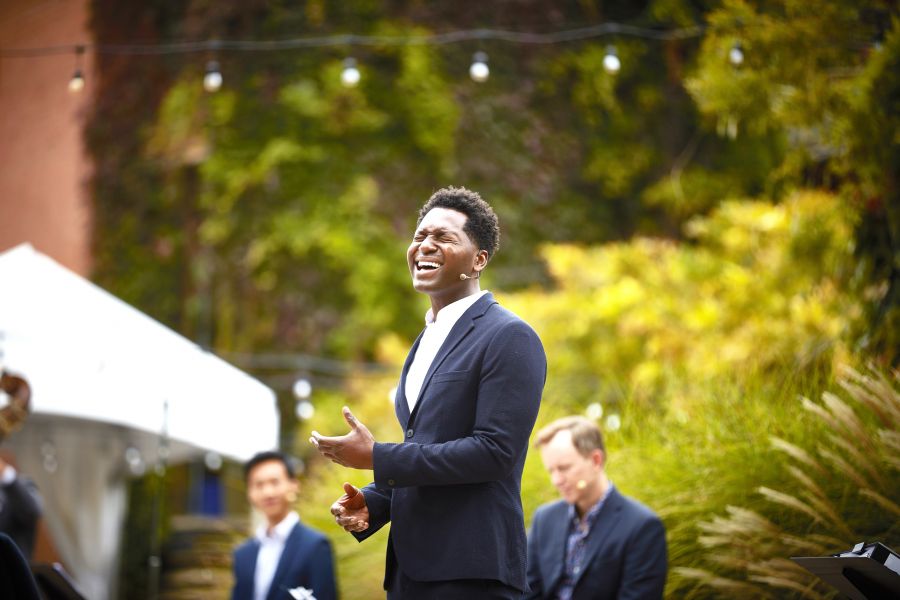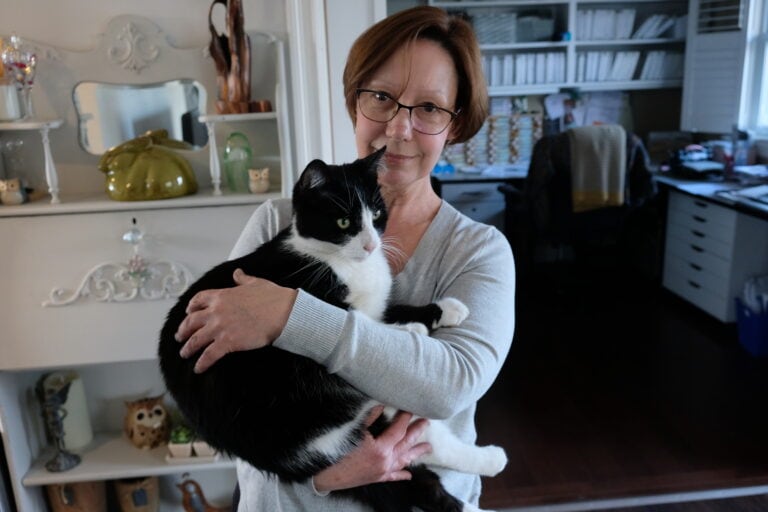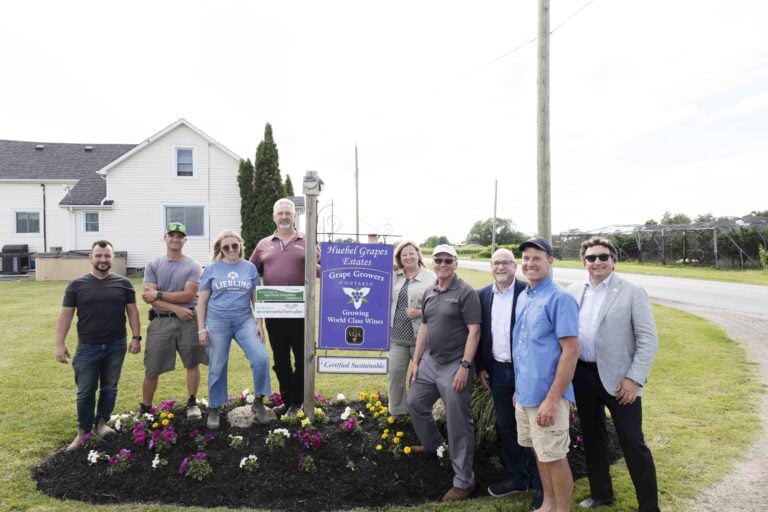The Shaw Festival has continued to kick the pandemic to the side, defying the devastation many arts organizations are facing as a result of a year-long global battle with COVID-19.
Despite the performing arts industry being the second-worst hit industry besides air travel — seeing a direct loss of $4.7 billion in Canada — Shaw managed to come out of 2020 with a $185,000 surplus for a fourth year in a row, festival treasurer Kevin Patterson said during the organization’s virtual annual general meeting on Friday.
With government grants factored in, as well as a performance interruption insurance policy implemented in 2015, Shaw was able to keep staff employed, put on more than 900 mostly virtual performances and managed an operating income of $24.1 million in 2020, with expenses of $23.9 million.
“To be able to announce an operating surplus in a year like 2020 is a remarkable feat and one everybody at the Shaw should be proud of,” Patterson said.
The pandemic insurance policy “allowed the management team to proceed with other activities in 2020 with security and optimism,” said Shaw board chair Peter Jewett.
Rather than struggling financially during COVID-19, Shaw’s leadership team was able to focus on staff, patrons, artists and people, he said.
“We used the federal government's wage subsidy and our insurance to maintain employment. And we added all of our 2020 artists to a new summer employment program,” Jewett said.
“We call this program ECOS, which stands for education and community outreach specialists, and that allowed us to maintain almost all of our workforce through the intended season, and it allowed us to stay connected with patrons, students and our communities,” he said.
Another major area of focus was ensuring the Shaw is a diverse, inclusive and safe environment for staff, Jewett said.
In 2020, the festival created a new equity, diversity and inclusivity task force comprised of 14 artists, board members and staff, along with a third-party consultant to make recommendations on the company’s next steps and policy improvements.
Those recommendations are expected by April, Jewett said.
“We are determined that the Shaw will be a safe, respectful, trusting, diverse, equitable and inclusive workplace,” he said.
“All of our Black, Indigenous and other employees and artists of colour have been on the receiving end of unacceptable racial comments and behaviours, whether consciously intended or not,” he said.
“We cannot turn a blind eye on our history. So Shaw has taken this moment to look at how it can more widely supported and diversify its workforce, include a wider range of communities in its programs, boards and volunteers.”
He said the Shaw would “continue to ensure that those who have been excluded from our stages or treated in an unacceptable manner within our walls, by intent or not, will never have those barriers in front of them again.”
Artistic director Tim Carroll spoke about some of the challenges the organization faced in 2020 and how the need for art was realized perhaps more than ever before.
“Well, we've learned haven't we this year? I hope we've learned something, it's a bit of a waste of a disaster if we don't learn something from it,” he said.
“And what it feels to me we've learned is how right we were about human connection. We've been saying all along that theatre is actually a basic human need, and I think that's been proved,” Carroll said.
“We've really felt the lack of our audiences, we've felt the pain of not being able to be together and share the same room and the same energy, so it's been a kind of vindication although not one we would have wished for.”
Carroll said support from his colleagues and the community has been a big factor in helping him “to keep going.”
However, despite the challenges, with creative thinking, the festival was still able to put on more than 900 events, most of them virtual.
“It's been an education for me to see how much has been possible in the digital sphere. I must admit, I've never been convinced of the wondrousness of streamed performances, and I'm still not,” Carroll said.
“But I did have my eyes really opened by the number of different ways we were able to engage with our audience.”
He said it’s important to take those lessons into the future. For example, some events like educational workshops actually saw more engagement, with fewer events.
The Shaw has also created a wellness initiative called Shaw Link to help staff through the pandemic by connecting them to share questions, concerns and talk about issues affecting the Shaw and its artists.
Carroll said it’s been “a delight” watching the work of the group.
“I’ve really learned that we've got a kind of amazing team here. We've got amazingly good people, amazingly strong people, and I really can't wait to get back and tell them to their faces,” he said.
Carroll praised the company’s executive director Tim Jennings for his work to help the Shaw’s employees.
“I think everyone at the Shaw would want me to speak for them in saying that we have limitless gratitude for the untiring work he's done. A lot of that work isn't glamorous and a lot of it is hidden to the likes of us who just do the art, but I can tell you, and I'm sure you believe it, that Tim's focus has been absolutely unflinchingly on keeping everyone whole, on looking after the people in the organization.”
Jennings echoed Carroll’s sentiments about artists needing the work.
“For many, many artists the nature of this work is a calling and that calling they have to fulfil,” he said. “And we've seen the mental health issues that affect society when we don't get to fulfil those basic human needs that art serves.”
He also lauded Carroll and the artistic and production teams for their work to keep audience engagement alive.
They “pivoted and pivoted and pivoted again, all through last year creating new programs, and finding new and exciting ways to engage with our communities and trying and implementing dozens of new ideas on the fly, and then reworking them each time to make them better and to make better art,” he said.
Associate artistic director Kimberly Rampersad noted that during the pandemic, performances “grew from backyards of donors, to offerings to the public on both the Shaw campus and with partner businesses in the Niagara region. And with further help from Fed Dev Ontario we grew, so we added two more musicians. And then we added microphones and sound design, which came with more crew members,” she said.”
Carroll said what the Shaw’s learned in 2020 is just “scratching the surface” of what could be done in 2021.
The festival is also looking at “beta-testing” having actors work full-time, rather than on contract, and also taking on other roles within the company.
He said six actors will start next week as full-time staff members.
“It could be quite a game-changing transformation of the theatrical landscape if it caught on,” Carroll said.
“I think it'll take a while to iron it out but I do think we've got the makings of a really good idea here.”
Jennings said all of the staff and board members have worked hard during the year to ensure the Shaw’s success.
“I am not sure that I have seen a team work harder than the Shaw's has this last year in a 35-year career. I am absolutely sure that our belief in theatre as serving basic human needs and societal needs has never been made more clear than it has been over the last 12 months.”











